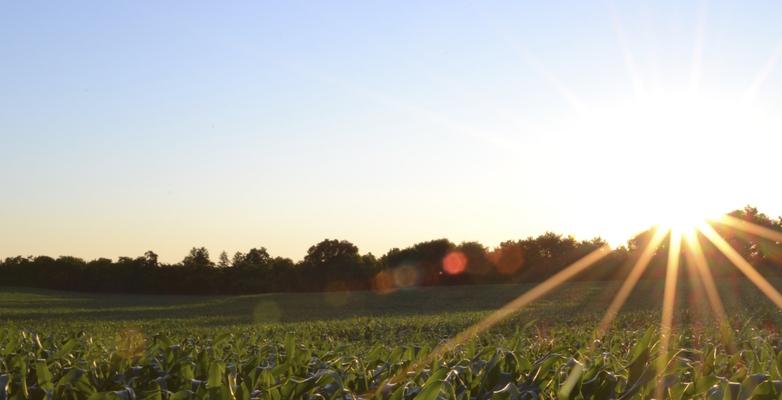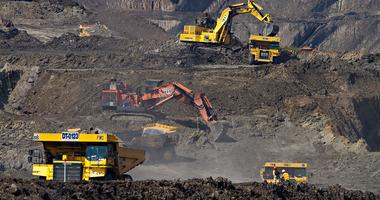
Love Regenerative Agriculture? Thank Indigenous Peoples
It’s important that credit be given where it’s due; the practices we now praise as being good for food security and the environment were not dreamed up in a laboratory in the last decade or two.
“Regenerative agriculture” has become a bigtime buzz word(s) in farming circles in recent years. And for good reason.
It is, in short, a system of farming principles and a set of practices that seeks to rehabilitate and enhance the entire ecosystem of the farm. Those practices include conservation tillage (aka, as little soil disturbance as possible), crop rotation, and polyculture – the planting of compatible, supportive plant species together to limit pests, suppress weeds, and improve the health of the soil.
Importantly, regenerative agriculture is one way farmers are responding to the climate crisis.
The benefits of doing so are numerous: Regenerative practices increase soil biodiversity and organic matter, leading to more resilient soils that can better withstand climate change impacts like flooding and drought. Healthy soils beget higher yields and nutrient-rich crops. It also diminishes erosion and fertilizer runoff, leading to improved water quality on and off the farm.
Seeing more and more growers, both big and small, embrace regenerative practices is heartening because the agriculture sector is one of the biggest emitters of the greenhouse gases (GHGs) most responsible for the changes we are seeing in our climate today. Together with forestry and other land use, agriculture is responsible for just under 25 percent of all human-created GHG emissions.
But while many farmers are only now embracing these techniques, they are likely unaware that these practices are anything but new. How many farmers, do you think, know they are caring for their land in the same way that Indigenous peoples in the Americas have cared for theirs for thousands of years?
New to Many, But Not All
Did you know that there were no domesticated draft animals in the Western Hemisphere before European colonization of the Americas?
We know! In turn, there was no such thing as tilling as we know it today.
The first cattle were brought to the Americas in the late 1400s, with other large animals to follow. No draft animals means no plowing, leaving Indigenous growers to farm using low- and no-till practices very similar to the ones that are taking root (sorry…) on farms today.
There’s a good reason for that, too: Plowing and tillage dramatically erode soil and release large amounts of carbon dioxide into the atmosphere. They also can result in the kind of bare or compacted soil that creates a hostile environment for important soil microbes.
By adopting low- or no-till practices similar to those Indigenous growers undertook out of necessity, farmers minimize physical disturbance of the soil, and over time increase levels of soil organic matter, creating healthier, more resilient environments for plants to thrive, as well as keeping more and more carbon where it belongs… in the ground.
The Three Sisters
“In agricultural parlance, 'The Three Sisters' are crops planted together in a shared space: maize, beans, and squash…. Developed through [I]ndigenous agricultural practices, these three plants protect and nourish each other in different ways as they grow and provide a solid diet for their cultivators," according to Chavonda Jacobs-Young, PhD administrator, Agricultural Research Service, US Department of Agriculture.
Maize, beans, and squash were vital crops in Indigenous communities. And together, they provide one another with a complete array of nutrients (beans, for example, supply the abundant nitrogen needed for the maize to thrive) and protection.
Different plants release different carbohydrates through their root systems, and various microbes feed on these carbs and return all sorts of different nutrients back to the plant and the soil.
Regenerative farmers today call this practice polyculture, and engage it with different guilds, as the varied compatible plants are often called. But it is very much in keeping with the way Native Americans deployed it – intercropping to create the rich, varied, and nutrient-dense soils that lead to more productive yields year after year.
Water is Life
Native Americans also developed passive water irrigation practices in traditionally warm, dry (and getting warmer and drier, because of climate change) environments like the desert US southwest. Practices that can be looked at and adapted to today’s changing environments, as water becomes more and more scarce in the region.
The Zuni people in the US southwest positioned their agricultural fields in areas where they could collect and retain runoff from higher elevations, rather than planting in areas that need full-time irrigation.
The absence of tilling in traditional Indigenous farming practices limited erosion, and directing runoff water to agricultural fields also helped carry additional organic matter and sediment to crops in need of nutrients. At the same time, by directing the runoff, these Indigenous farmers were also able to largely save their communities from flooding.
“As with other Native American agriculturalists of this region, Zuni runoff farming uses no fertilizer or irrigation in the conventional sense,” the University of Arizona writes. “Farmers credit the ephemeral stormwater flows, which they divert onto well-placed fields, with supplying moisture and nutrients to produce crops.”
Working With Mother Nature
For farmers all over, regenerative agriculture practices are a win-win – it’s an approach that leads to better, more resilient crops grown using sustainable methods that fight a crisis that presents a threat to all agriculture.
But it’s important that credit be given where it’s due; the practices we now praise as being good for food security and the environment were not dreamed up in a laboratory in the last decade or two. They were born on the Plains, executed across Appalachia, and transformed desert spaces into oases long before colonizers stormed the shores of what is now the United States.
They were developed by Indigenous people. And we are grateful.
The techniques used by Indigenous peoples have an important role to play in securing a future free from fossil fuels.
The time to take back the planet's future is now. But working to leave fossil fuels behind and build a more just and sustainable tomorrow for all is no easy task.
Regenerative agriculture is just one facet of a complex web of solutions and action needed to turn this thing around. But we can do it. And people all over are working hard to make it happen.
Join Us on October 7
Interested in learning how those folks are taking action? From transforming farms using regenerative agriculture to committing major schools and businesses to justly transition to clean electricity, climate advocates like you are getting the job done, even as there’s still so much left to do.
To celebrate their successes, The Climate Reality Project will hold 24 Hours of Reality: Spotlight on Solutions and Hope, a global day celebrating action and solutions that confront the climate crisis.
Do you have a compelling climate success story that you would like Climate Reality to spotlight on social media and elsewhere? We would love to hear from you!
And be sure to join us on October 7 at 24hoursofreality.org to get inspired, discover what you can do, and take action to build the future we all want.




